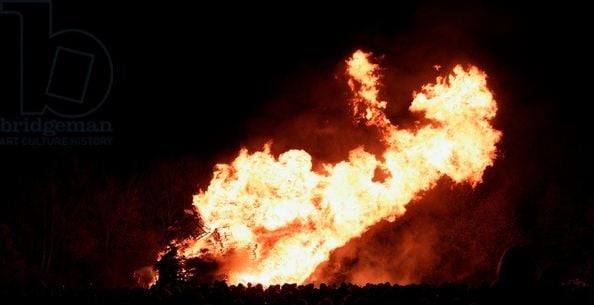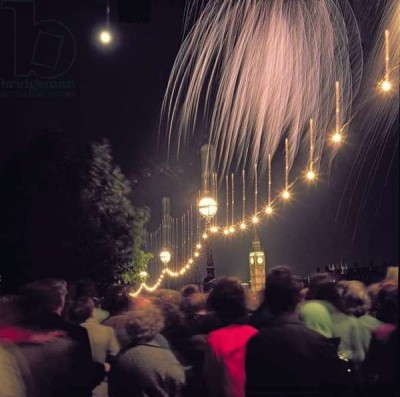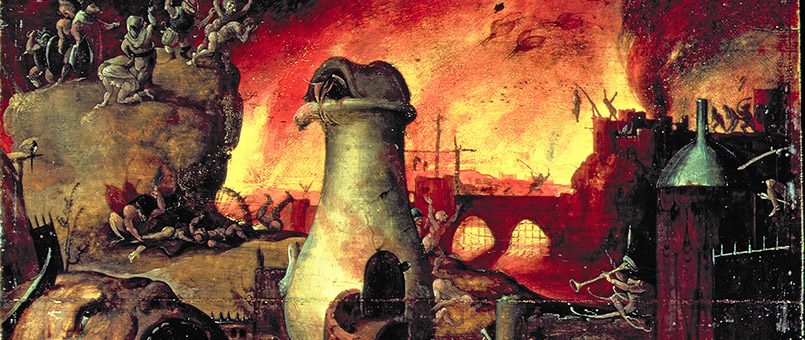
Bonfire Night: a brief social history, or why I’m staying in this year
November 5th, 2010. A freezing street in Lewes, East Sussex. A banger thrown by an inappropriately tiny child explodes between my feet (I lose composure), heralding the arrival of the annual Guy Fawkes’ Night parade, which is a really big deal here. It is suddenly very hot and dangerous, there are effigies and burning crosses, people in blackface drag barrels of flaming tar past our shins with baffling cries of “No Pot-Pourri!”. Where I grew up, bonfire night was always a bit stabby, yes, but primarily about buying small light-up plastic things that go flash flash and then break immediately. This was next level.
We escape the river of fire and scramble to the top of a big wet hill, where, amongst others, there is a man dressed as a screw. Some youths behind us shout at him: “OI, MAN DRESSED AS A SCREW”, but, ironically, he does not turn.

Artist’s impression. Hell (oil on panel), Hieronymus Bosch (c.1450-1516) (school of) / Hermitage, St. Petersburg, Russia; Some might say he had a screw lewes. The boy who became a screw, English School, (19th century) (after) / Private Collection / © Look and Learn
I misheard; it’s “No Popery”, as in “Boo To The Pope”. Lewes has beef with Popery because of the 16th century Protestant martyrs that were burned there (lots of burning has happened in Lewes).
Background on the Gunpowder Plot (1605) FYI: Robert Catesby, Catholic, leads assassination attempt on Protestant King James I. Guy Fawkes was the unlucky one discovered, on 5th November, guarding explosives in a basement underneath Parliament. 5th of November officially dedicated as day of ‘thanksgiving’ that the treasonous plot had been foiled.
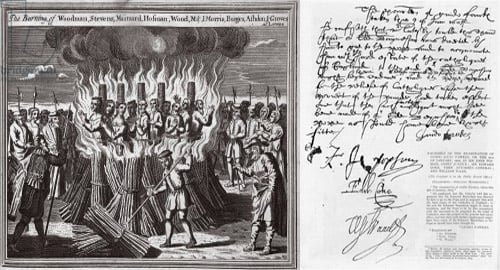
The burning of martyrs at Lewes, c.1703 (litho), English School, (18th century) / Private Collection; Facsimile of the examination of Guy Fawkes with his signature on 9th January 1606 / Private Collection
The Lewes bonfires, however, began not on the anniversary of the Gunpowder Plot, but as a series of random and violent class riots. These recurring spectacles of anarchy lost some of their political charge amidst the Imperial pomp of the later 19th century, becoming subsumed by tradition, and taking on a more processional and patriotic vibe in the process. Kids started a good scam, making Guy effigies out of straw and sacking etc, and asking people to pay them for this, which caught on probably because it was cute, but is pretty dark if you think about it. Effigies of other popular hate-figures have often been burned alongside Fawkes – British Prime Ministers in 18th-century America, for example; Osama Bin Laden in Lewes, 2001.
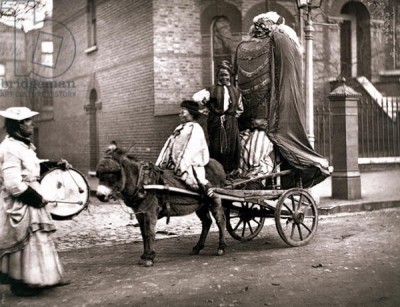
November Effigies, 1877-78 (woodburytype), Thomson, John (1837-1921) / Victoria & Albert Museum, London, UK
And then it became more about fireworks and plastic flashing things in the twentieth century, because manufacturers wanted to sell fireworks and plastic flashing things. My local display was cancelled in 2010 because they couldn’t afford Haringey’s ‘tougher health and safety requirements’ (it got too stabby?). But now it’s back! With an entry fee, so I guess that’s how they can afford the security (and at 9 quid a pop, it’ll presumably attract mostly respectable folk). I imagine people will still be going out to get scorched and shouted at (for free, mind you) on the streets of Lewes; I will be watching V for Vendetta on the internet instead.
All images sourced from Bridgeman Images.
Get in touch with the Bridgeman team on uksales@bridgemanimages.com with enquiries about licensing images and clearing copyright

